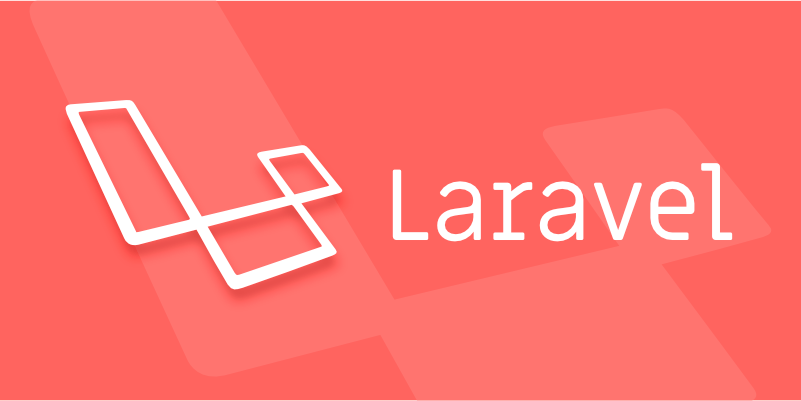Using many-to-many relationships with pivot tables in Laravel.
Jul 20, 2025 am 01:37 AMHow do you handle many-to-many relationships in Laravel using pivot tables? 1. Create a pivot table following Laravel’s naming convention (alphabetical order of the two related tables, e.g., role_user). 2. Define foreign keys (e.g., user_id and role_id) and set up foreign key constraints in the migration. 3. Use belongsToMany() in both related models to define the relationship. 4. Customize pivot table name if needed by passing it as the second argument in the relationship method. 5. Access pivot data using ->pivot and include extra columns using withPivot(). 6. Use withTimestamps() to include timestamps in the pivot table. 7. Attach, detach, or sync relationships using attach(), detach(), or sync() methods, and pass extra pivot data as an array when attaching.

When working with databases in Laravel, handling many-to-many relationships is common — and Laravel makes it pretty straightforward using pivot tables.

What Is a Many-to-Many Relationship?
In database terms, a many-to-many relationship means that one record in a table can be associated with multiple records in another table, and vice versa. For example, a user might belong to multiple roles, and a role can include many users.
To manage this, you need a third table called a pivot table (also known as a junction or bridge table). This table typically contains only the foreign keys from the two related tables — like user_id and role_id.

How to Set Up a Pivot Table in Laravel
Laravel uses conventions for naming pivot tables: it combines the names of the two related tables in alphabetical order. So if you have users and roles, the pivot table should be named role_user.
Here’s how to create the migration:

Schema::create('role_user', function (Blueprint $table) {
$table->unsignedBigInteger('user_id');
$table->unsignedBigInteger('role_id');
$table->foreign('user_id')->references('id')->on('users')->onDelete('cascade');
$table->foreign('role_id')->references('id')->on('roles')->onDelete('cascade');
$table->primary(['user_id', 'role_id']);
});You can also use $table->timestamps() if you want to track when the relationship was created.
A small but important detail: always make sure your foreign key types match exactly with the primary key types in the referenced tables. Otherwise, you’ll run into constraint issues.
Defining Relationships in Models
Once the pivot table exists, you define the relationships in your models using belongsToMany().
In your User model:
public function roles()
{
return $this->belongsToMany(Role::class);
}And in your Role model:
public function users()
{
return $this->belongsToMany(User::class);
}By default, Laravel assumes the pivot table name follows the convention (role_user), but you can override it by passing it as the second argument:
return $this->belongsToMany(Role::class, 'user_roles');
Working with Pivot Data
One of the most useful features in Laravel is that you can access the pivot data directly once the relationship is loaded.
For example:
$user = User::find(1)->with('roles')->first();
foreach ($user->roles as $role) {
echo $role->pivot->role_id;
}If your pivot table has extra columns — like is_primary — you need to specify them when defining the relationship:
return $this->belongsToMany(Role::class)->withPivot('is_primary');Or even better, use withTimestamps if you included timestamps:
return $this->belongsToMany(Role::class)->withPivot('is_primary')->withTimestamps();This lets you work with those extra fields like any other attribute.
Syncing Relationships
Adding and removing relationships is easy thanks to Laravel's built-in methods.
To attach a role to a user:
$user->roles()->attach($roleId);
To remove it:
$user->roles()->detach($roleId);
Or, to completely reset the list:
$user->roles()->sync([1, 2, 3]);
This will remove any existing roles not in the array and add any new ones.
If your pivot table has extra attributes, like
is_primary, you can pass an array with values when attaching:$user->roles()->attach($roleId, ['is_primary' => true]);
That's basically how you handle many-to-many relationships in Laravel using pivot tables. It's not complicated, but there are a few small details — like pivot table naming, foreign key types, and loading pivot data — that can trip you up if overlooked.
The above is the detailed content of Using many-to-many relationships with pivot tables in Laravel.. For more information, please follow other related articles on the PHP Chinese website!

Hot AI Tools

Undress AI Tool
Undress images for free

Undresser.AI Undress
AI-powered app for creating realistic nude photos

AI Clothes Remover
Online AI tool for removing clothes from photos.

Clothoff.io
AI clothes remover

Video Face Swap
Swap faces in any video effortlessly with our completely free AI face swap tool!

Hot Article

Hot Tools

Notepad++7.3.1
Easy-to-use and free code editor

SublimeText3 Chinese version
Chinese version, very easy to use

Zend Studio 13.0.1
Powerful PHP integrated development environment

Dreamweaver CS6
Visual web development tools

SublimeText3 Mac version
God-level code editing software (SublimeText3)
 How to set environment variables in PHP environment Description of adding PHP running environment variables
Jul 25, 2025 pm 08:33 PM
How to set environment variables in PHP environment Description of adding PHP running environment variables
Jul 25, 2025 pm 08:33 PM
There are three main ways to set environment variables in PHP: 1. Global configuration through php.ini; 2. Passed through a web server (such as SetEnv of Apache or fastcgi_param of Nginx); 3. Use putenv() function in PHP scripts. Among them, php.ini is suitable for global and infrequently changing configurations, web server configuration is suitable for scenarios that need to be isolated, and putenv() is suitable for temporary variables. Persistence policies include configuration files (such as php.ini or web server configuration), .env files are loaded with dotenv library, and dynamic injection of variables in CI/CD processes. Security management sensitive information should be avoided hard-coded, and it is recommended to use.en
 How to make PHP container support automatic construction? Continuously integrated CI configuration method of PHP environment
Jul 25, 2025 pm 08:54 PM
How to make PHP container support automatic construction? Continuously integrated CI configuration method of PHP environment
Jul 25, 2025 pm 08:54 PM
To enable PHP containers to support automatic construction, the core lies in configuring the continuous integration (CI) process. 1. Use Dockerfile to define the PHP environment, including basic image, extension installation, dependency management and permission settings; 2. Configure CI/CD tools such as GitLabCI, and define the build, test and deployment stages through the .gitlab-ci.yml file to achieve automatic construction, testing and deployment; 3. Integrate test frameworks such as PHPUnit to ensure that tests are automatically run after code changes; 4. Use automated deployment strategies such as Kubernetes to define deployment configuration through the deployment.yaml file; 5. Optimize Dockerfile and adopt multi-stage construction
 What is Configuration Caching in Laravel?
Jul 27, 2025 am 03:54 AM
What is Configuration Caching in Laravel?
Jul 27, 2025 am 03:54 AM
Laravel's configuration cache improves performance by merging all configuration files into a single cache file. Enabling configuration cache in a production environment can reduce I/O operations and file parsing on each request, thereby speeding up configuration loading; 1. It should be enabled when the application is deployed, the configuration is stable and no frequent changes are required; 2. After enabling, modify the configuration, you need to re-run phpartisanconfig:cache to take effect; 3. Avoid using dynamic logic or closures that depend on runtime conditions in the configuration file; 4. When troubleshooting problems, you should first clear the cache, check the .env variables and re-cache.
 Explain Laravel Eloquent Scopes.
Jul 26, 2025 am 07:22 AM
Explain Laravel Eloquent Scopes.
Jul 26, 2025 am 07:22 AM
Laravel's EloquentScopes is a tool that encapsulates common query logic, divided into local scope and global scope. 1. The local scope is defined with a method starting with scope and needs to be called explicitly, such as Post::published(); 2. The global scope is automatically applied to all queries, often used for soft deletion or multi-tenant systems, and the Scope interface needs to be implemented and registered in the model; 3. The scope can be equipped with parameters, such as filtering articles by year or month, and corresponding parameters are passed in when calling; 4. Pay attention to naming specifications, chain calls, temporary disabling and combination expansion when using to improve code clarity and reusability.
 PHP development user permission management monetization PHP permission control and role management
Jul 25, 2025 pm 06:51 PM
PHP development user permission management monetization PHP permission control and role management
Jul 25, 2025 pm 06:51 PM
User permission management is the core mechanism for realizing product monetization in PHP development. It separates users, roles and permissions through a role-based access control (RBAC) model to achieve flexible permission allocation and management. The specific steps include: 1. Design three tables of users, roles, and permissions and two intermediate tables of user_roles and role_permissions; 2. Implement permission checking methods in the code such as $user->can('edit_post'); 3. Use cache to improve performance; 4. Use permission control to realize product function layering and differentiated services, thereby supporting membership system and pricing strategies; 5. Avoid the permission granularity is too coarse or too fine, and use "investment"
 How to create a helper file in Laravel?
Jul 26, 2025 am 08:58 AM
How to create a helper file in Laravel?
Jul 26, 2025 am 08:58 AM
Createahelpers.phpfileinapp/HelperswithcustomfunctionslikeformatPrice,isActiveRoute,andisAdmin.2.Addthefiletothe"files"sectionofcomposer.jsonunderautoload.3.Runcomposerdump-autoloadtomakethefunctionsgloballyavailable.4.Usethehelperfunctions
 How to build a log management system with PHP PHP log collection and analysis tool
Jul 25, 2025 pm 08:48 PM
How to build a log management system with PHP PHP log collection and analysis tool
Jul 25, 2025 pm 08:48 PM
Select logging method: In the early stage, you can use the built-in error_log() for PHP. After the project is expanded, be sure to switch to mature libraries such as Monolog, support multiple handlers and log levels, and ensure that the log contains timestamps, levels, file line numbers and error details; 2. Design storage structure: A small amount of logs can be stored in files, and if there is a large number of logs, select a database if there is a large number of analysis. Use MySQL/PostgreSQL to structured data. Elasticsearch Kibana is recommended for semi-structured/unstructured. At the same time, it is formulated for backup and regular cleaning strategies; 3. Development and analysis interface: It should have search, filtering, aggregation, and visualization functions. It can be directly integrated into Kibana, or use the PHP framework chart library to develop self-development, focusing on the simplicity and ease of interface.
 How to implement a referral system in Laravel?
Aug 02, 2025 am 06:55 AM
How to implement a referral system in Laravel?
Aug 02, 2025 am 06:55 AM
Create referrals table to record recommendation relationships, including referrals, referrals, recommendation codes and usage time; 2. Define belongsToMany and hasMany relationships in the User model to manage recommendation data; 3. Generate a unique recommendation code when registering (can be implemented through model events); 4. Capture the recommendation code by querying parameters during registration, establish a recommendation relationship after verification and prevent self-recommendation; 5. Trigger the reward mechanism when recommended users complete the specified behavior (subscription order); 6. Generate shareable recommendation links, and use Laravel signature URLs to enhance security; 7. Display recommendation statistics on the dashboard, such as the total number of recommendations and converted numbers; it is necessary to ensure database constraints, sessions or cookies are persisted,






